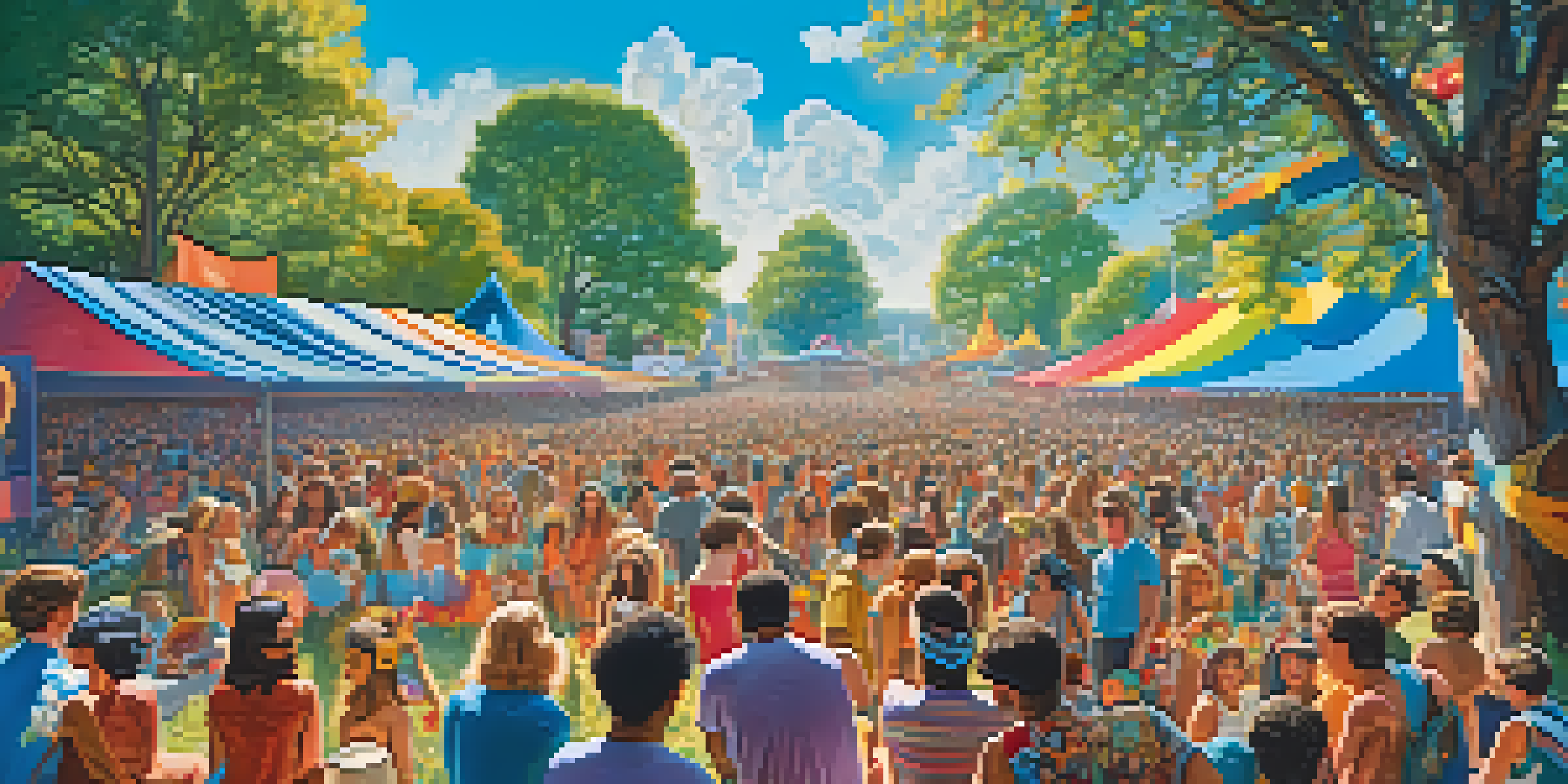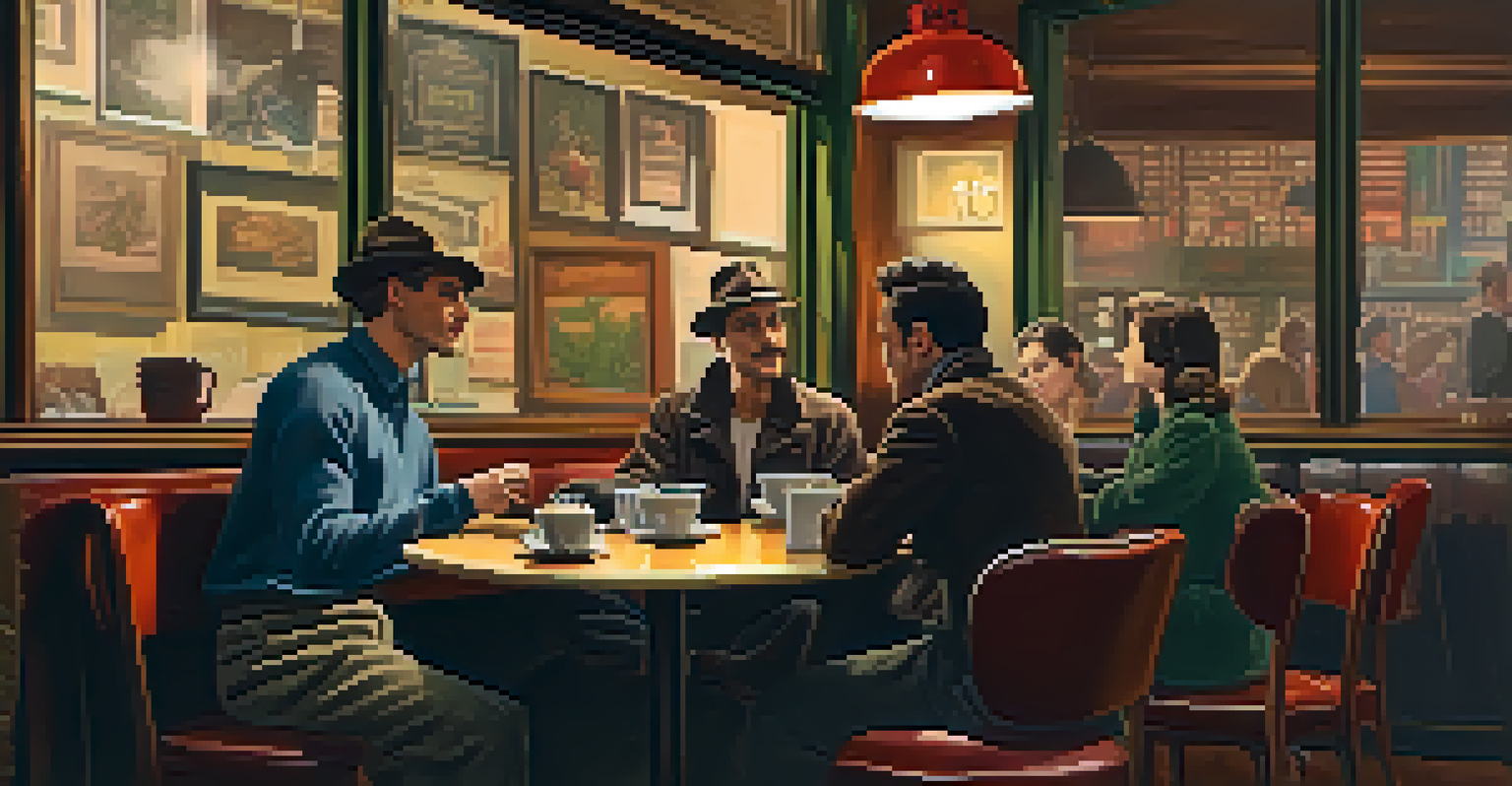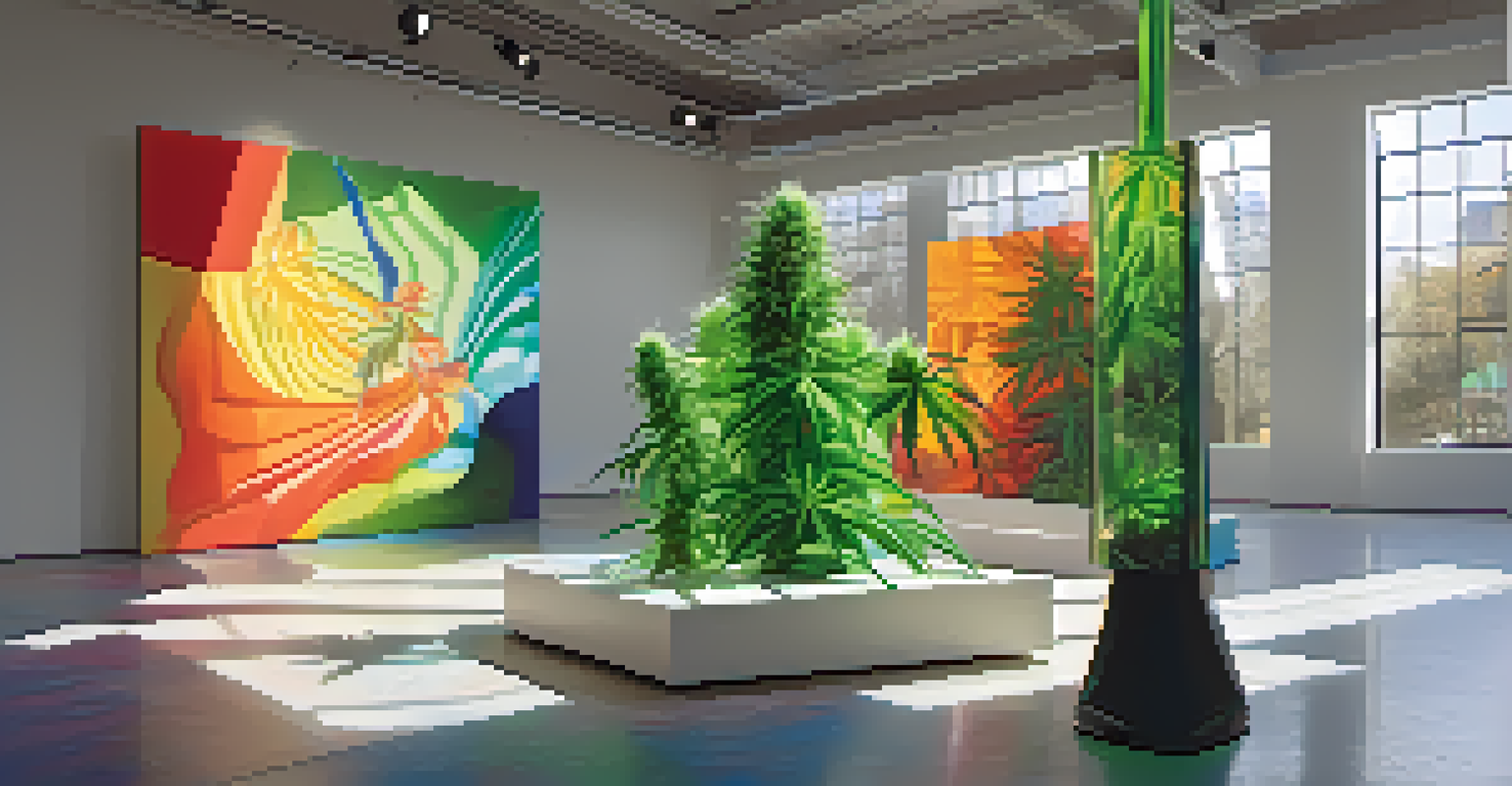The Role of Cannabis in Shaping Counterculture Movements

Cannabis: A Catalyst for Change in the 1960s
The 1960s marked a pivotal time in history, with the rise of counterculture movements that challenged societal norms. Cannabis became a symbol of rebellion, representing freedom and self-expression for many young people. As musicians and artists embraced marijuana, it found its way into the music and art of the era, creating a cultural revolution.
The drug became a unifying force, bringing people together in shared experiences of struggle and resilience.
Iconic bands like The Beatles and The Grateful Dead openly celebrated cannabis, using it as a muse for creativity and connection. This not only influenced their art but also encouraged a broader acceptance of cannabis use among their fans. The ethos of peace and love intertwined with the drug, further embedding it into the fabric of the counterculture movement.
As protests against the Vietnam War grew, cannabis use became associated with anti-establishment sentiments. For many, smoking pot was not just a personal choice; it was a political statement against authority and conformity, highlighting the drug's role in shaping a generation's identity.
The Beat Generation and Early Cannabis Culture
Before the 1960s, the Beat Generation of the 1950s laid the groundwork for cannabis as a countercultural symbol. Writers like Jack Kerouac and Allen Ginsberg experimented with cannabis, using it to expand their minds and challenge conventional thinking. Their literary works reflected a desire for authenticity that resonated with many who felt stifled by mainstream society.

The Beats celebrated spontaneity, creativity, and a rejection of materialism, all of which aligned with the ethos of cannabis culture. Coffee shops and bars became gathering spots where ideas flowed as freely as the smoke, fostering a community that valued artistic expression. This laid the foundation for later movements that would adopt cannabis as a central theme.
Cannabis as a Symbol of Rebellion
During the 1960s, cannabis emerged as a powerful symbol of counterculture, representing freedom and self-expression for a generation.
As the Beat Generation gained prominence, so did the discussion around cannabis, shifting it from taboo to a tool for self-exploration. This early association between cannabis and intellectualism set the stage for its later adoption by the broader counterculture, deepening its significance in shaping societal values.
Cannabis and the Civil Rights Movement
Cannabis played a role in the Civil Rights Movement, influencing the lives of activists and artists alike. Figures like Bob Marley and Nina Simone used their platforms to highlight issues of racial injustice, with marijuana often serving as a means of coping with oppression. The drug became a unifying force, bringing people together in shared experiences of struggle and resilience.
As cannabis moves into the realm of legality and business, many advocates emphasize the importance of preserving its historical significance.
As civil rights leaders fought for equality, cannabis culture intertwined with their messages of liberation. Many activists viewed the fight against cannabis prohibition as part of a broader struggle against systemic racism and injustice. This connection between cannabis and civil rights further solidified its role in countercultural movements.
The era saw profound changes in attitudes toward cannabis, especially within the African American community. As more individuals began to speak out against injustices, cannabis became a symbol of resistance against a society that marginalized their voices.
The Influence of Cannabis on Music and Art
Throughout history, music and art have been deeply influenced by cannabis, serving as creative fuel for numerous artists. In genres like jazz, rock, and reggae, cannabis has inspired some of the most iconic songs and visuals, forging a strong connection between the drug and artistic expression. Musicians often describe cannabis as a means to tap into deeper emotions and ideas.
The improvisational nature of jazz, for example, was significantly shaped by cannabis culture, as musicians found new ways to create and innovate. This spirit of experimentation resonated across genres, with bands like Pink Floyd exploring psychedelic themes while under the influence of cannabis, pushing the boundaries of their art.
Cannabis and Social Movements
The drug played a significant role in the Civil Rights Movement, uniting activists and highlighting issues of racial injustice and systemic oppression.
Moreover, visual artists have also drawn inspiration from cannabis, creating works that reflect its influence on consciousness and perception. The melding of cannabis with artistic expression has created a rich tapestry of cultural artifacts that continue to resonate with audiences today.
Cannabis and the Rise of the Counterculture in the 1970s
The 1970s saw cannabis firmly established within counterculture as a symbol of liberation and defiance against mainstream values. As the backlash against the counterculture intensified, cannabis use became a means of resisting societal pressures and asserting individuality. The drug was embraced not just as a recreational substance, but as a tool for personal and collective empowerment.
During this time, the legalization movement began to take shape, challenging the existing laws surrounding cannabis use. Activists pushed for reform, arguing that cannabis was not only harmless but beneficial for society. This growing advocacy helped redefine cannabis as a legitimate part of the cultural landscape rather than merely a vice.
Festivals like Woodstock in 1969 laid the groundwork for a vibrant cannabis culture that flourished in the 70s. These events showcased the drug's role in fostering community and connection, drawing people together in celebration of music, art, and shared beliefs.
Modern Counterculture and the Evolving Image of Cannabis
In recent years, the image of cannabis has evolved significantly within modern counterculture. With the push for legalization and decriminalization sweeping across various states and countries, cannabis has transitioned from a symbol of rebellion to a mainstream commodity. This shift has sparked discussions about the commercialization of cannabis and what that means for its countercultural roots.
As cannabis moves into the realm of legality and business, many advocates emphasize the importance of preserving its historical significance. The challenge lies in balancing the benefits of legalization with the need to honor the culture and communities that fought for cannabis rights. This ongoing conversation reflects the dynamic nature of counterculture and its adaptability to changing societal norms.
The Evolution of Cannabis Culture
As cannabis legalization progresses, its image has shifted from a rebellious symbol to a mainstream commodity, sparking discussions about preserving its cultural roots.
Furthermore, contemporary artists continue to explore cannabis themes in their work, ensuring that its legacy as a countercultural symbol remains alive. From music festivals celebrating cannabis culture to art installations addressing its history, the drug continues to inspire creativity and provoke thought.
The Future of Cannabis in Counterculture Movements
Looking ahead, the future of cannabis in counterculture movements remains promising yet complex. As more societies embrace legalization, there is an opportunity for new narratives to emerge that honor the contributions of past generations. This could lead to a renaissance of cannabis as a tool for social change and artistic expression.
However, the challenge lies in ensuring that the voices of those historically impacted by cannabis prohibition are not overshadowed by the commercialization of the industry. Advocates are calling for equity in cannabis legislation, emphasizing the need for inclusivity and representation. Ensuring that new movements honor the past while shaping the future will be crucial.

As cannabis continues to play a role in social justice, art, and community, its ability to inspire and unite will likely remain a cornerstone of counterculture. By embracing its rich history and fostering dialogue, cannabis can continue to be a transformative force in society, shaping the values and beliefs of future generations.